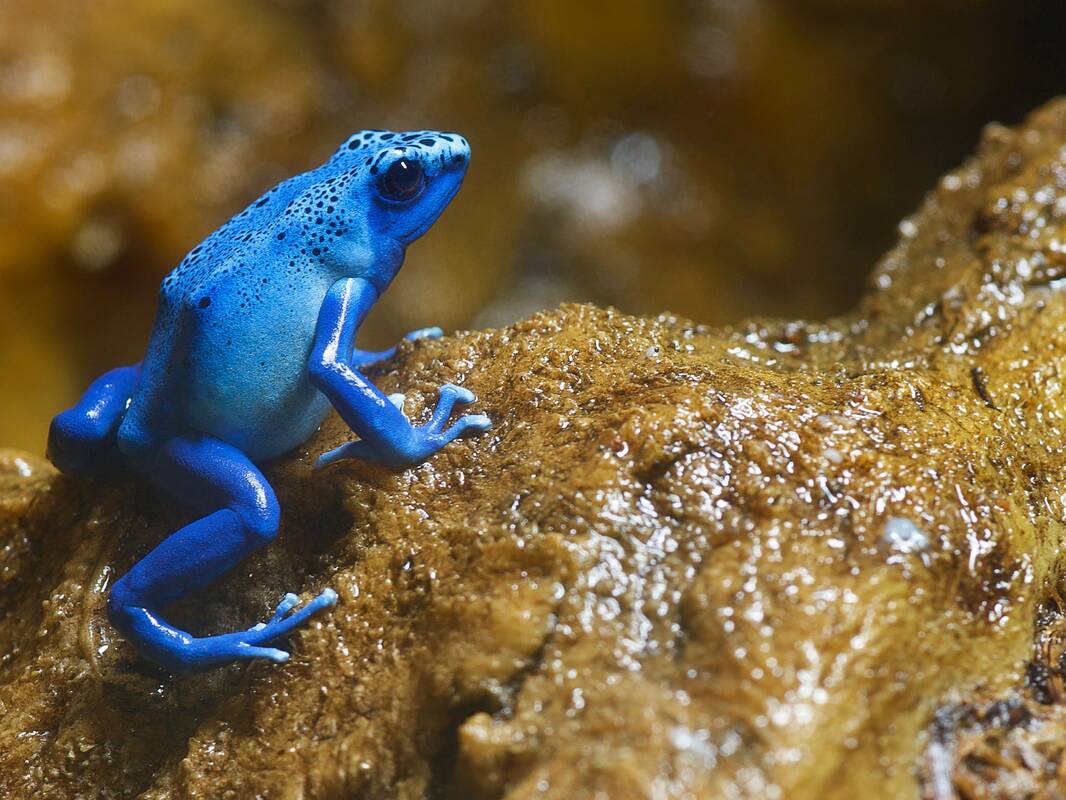

However, the most popular enclosures among most dart frog keepers are glass aquaria. There are a number of different enclosure types from which you can choose, including commercially manufactured amphibian cages and plastic storage boxes. The first thing you’ll need to acquire for your poison dart frogs is a suitable habitat. Selecting the Right Enclosure for a Poison Dart Frog If this isn’t possible, latex gloves can be used to protect the keeper from the kept and vice versa.
BLUE POISON DART FROG SKIN
Not only is it impossible for keepers to know when their frogs have stopped producing the harmful skin secretions, handling any amphibian with bare hands can cause damage to the animal’s skin and health.Īccordingly, it is wise for poison dart frog keepers to use small nets or cups to move or inspect their pets. Nevertheless, it is still wise to avoid handling poison dart frogs with bare hands. Additionally, captive-bred individuals never produce toxins at all. This means that once they’ve been in captivity for some time and fed a diet of commercial insects, most dart frogs cease producing toxic skin secretions. Instead of producing their toxins internally the way some other amphibians do, poison dart frogs are thought to produce their toxins by sequestering some of the harmful alkaloids that are present in the insects they consume. This is because of the mechanism that provides poison dart frogs with their namesake poisons. However, in practice, poison dart frogs aren’t as dangerous to their keepers as one may initially think. This means that most hobbyists are usually more interested in caring for the species that present the greatest risk. Golden Poison Dart Frogīut unfortunately, most of the harmless or weakly toxic species are clad in drab colors, while the most dangerous species are typically very brightly colored. Conversely, many other species, such as some members of the genus Colostethus, are thought to be harmless or nearly so. This begs the question: Why on earth would keepers maintain such deadly pets?įor starters, it is important to note that different poison dart species present different risks – some may indeed be dangerous enough to kill a human, but others are less toxic and unlikely to cause serious symptoms for keepers who accidentally touch them.įor example, the golden poison dart frog ( Phyllobates terribilis) is a highly dangerous species, which is thought to be capable of causing a human death in a matter of minutes.

In fact, some species are toxic enough to kill those unfortunate enough to make contact with them. Poison dart frogs are infamous for being, well, poisonous. Safety First: Aren’t These Frogs Poisonous? Is It Safe to Keep Different Poison Dart Frog Species Together?.

Selecting the Right Enclosure for a Poison Dart Frog.Safety First: Aren’t These Frogs Poisonous?.


 0 kommentar(er)
0 kommentar(er)
